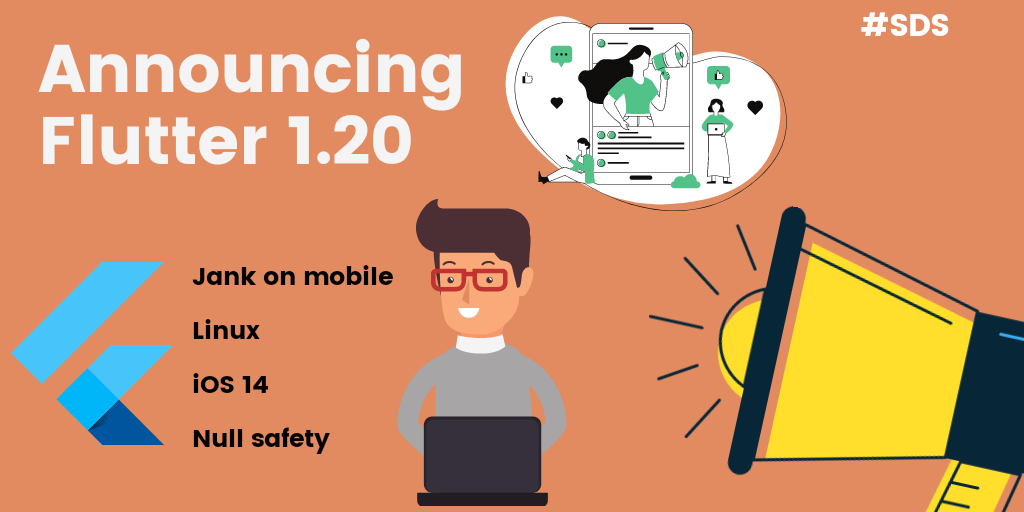Performance improvements, mobile autofill, a new widget and more!
- Reducing shader compilation jank on mobile
- Developing for iOS 14 beta
- New instructions for installing Flutter on Linux using snapd.
- Updated the Desktop support page to reflect that Linux desktop apps (as well as macOS) are available as alpha.
- Null safety has been added to dart.dev
1) Reduce shader compilation jank on mobile
If the animations on your mobile app appear to be janky, but only on the first run, you can warm up the shader captured in the Skia Shader Language (SkSL) for a significant improvement.

If an app has janky animations during the first run, and later becomes smooth for the same animation, then it’s very likely due to shader compilation jank.
More technically, a shader is a piece of code that runs on a GPU (graphics processing unit). When a shader is first used, it needs to be compiled on the device. The compilation could cost up to a few hundred milliseconds whereas a smooth frame needs to be drawn within 16 milliseconds for a 60 fps (frame-per-second) display. Therefore, a compilation could cause tens of frames to be missed, and drop the fps from 60 to 6. This is compilation jank. After the compilation is complete, the animation should be smooth.
How to use SkSL warmup
Use the following instructions to collect and package the SkSL shaders:
- Run the app with
--cache-skslturned on to capture shaders in SkSL:
flutter run --profile --cache-sksl
2. Play with the app to trigger as many animations as needed; particularly those with compilation jank.
3. Press M at the command line of flutter run to write the captured SkSL shaders into a file named something like flutter_01.sksl.json.
4. Build the app with SkSL warm-up using the following, as appropriate:
Android:
flutter build apk --bundle-sksl-path flutter_01.sksl.json
iOS:
flutter build ios --bundle-sksl-path flutter_01.sksl.json
5. Test the newly built app.
flutter drive --profile --cache-sksl --write-sksl-on-exit flutter_01.sksl.json -t test_driver/app.dart
With such integration tests, you can easily and reliably get the new SkSLs when the app code changes, or when Flutter upgrades. Such tests can also be used to verify the performance change before and after the SkSL warm-up. Even better, you can put those tests into a CI (continuous integration) system so the SkSLs are generated and tested automatically over the lifetime of an app.
#flutter #mobile-apps #developer
